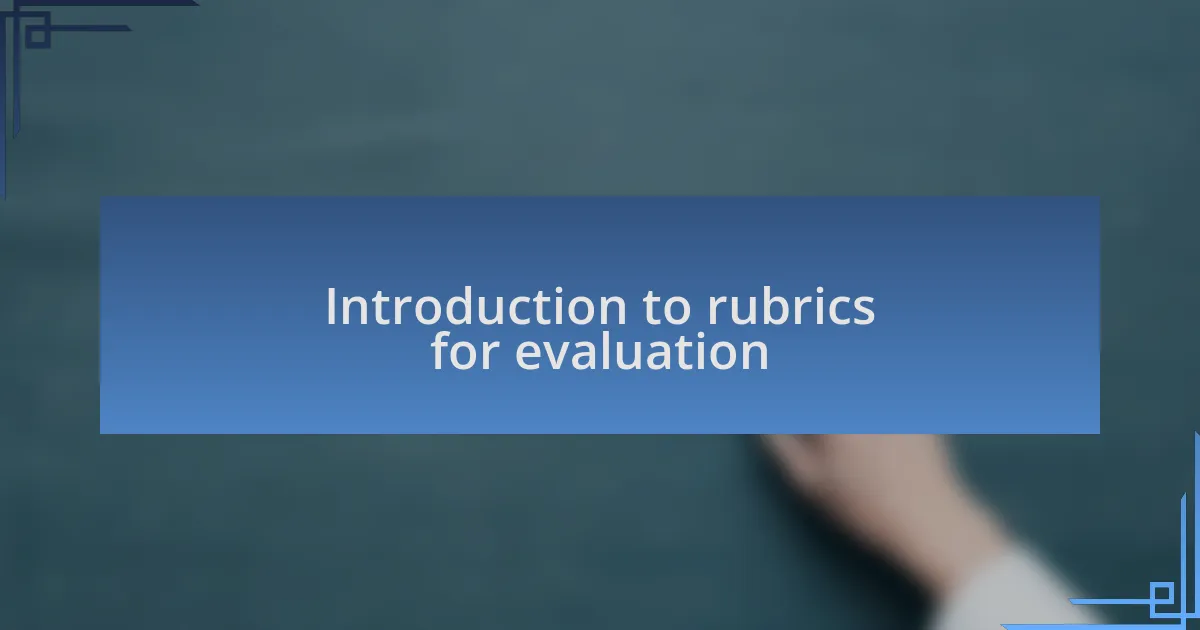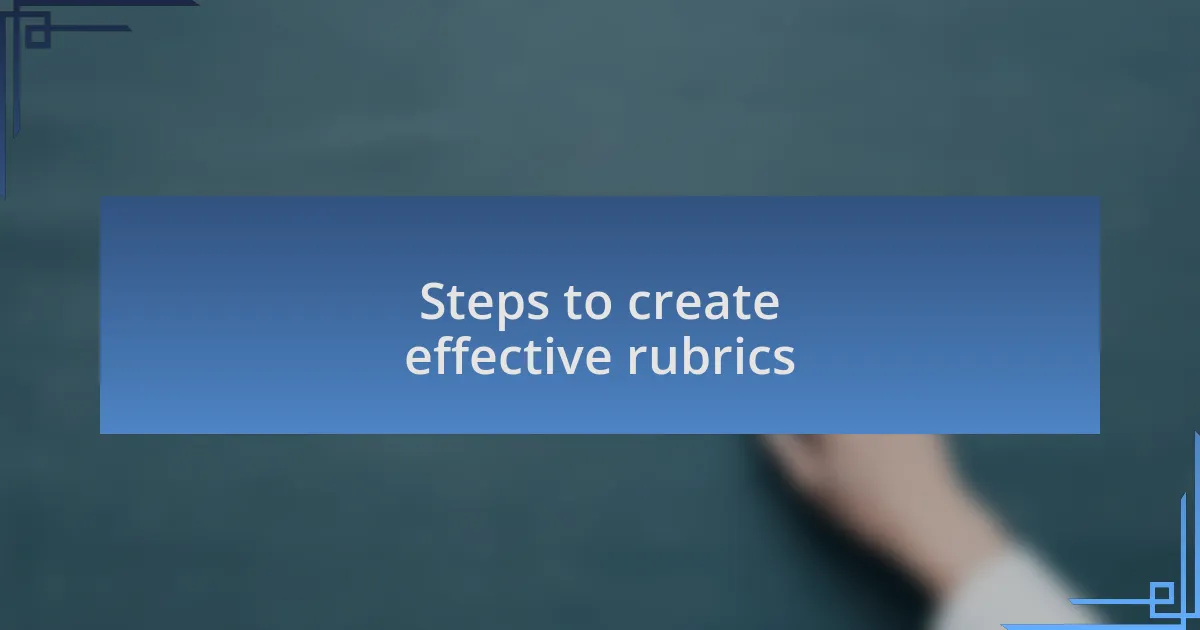Key takeaways:
- Rubrics clarify expectations and reduce confusion in the evaluation process, especially for students with dyslexia.
- Involving students in the development and review of rubrics fosters ownership and motivation, enhancing their learning experience.
- Focus on specific criteria like content clarity, organization, and performance levels when creating effective rubrics.
- Regularly seeking student feedback on rubrics supports continuous improvement and alignment with their needs.

Introduction to rubrics for evaluation
Rubrics are essential tools in the evaluation process, especially when assessing students with dyslexia. They provide structured criteria that help clarify expectations, making it easier for learners to understand what is required of them. Have you ever tried to make sense of vague grading comments? I know I have, and it can be incredibly frustrating; rubrics eliminate that confusion.
When I first introduced rubrics into my teaching, I noticed an immediate shift in student confidence. Suddenly, the criteria for success were laid out clearly in front of them, allowing students to gauge their progress and focus on specific areas for improvement. Isn’t it rewarding to see how a simple tool can empower learners to take ownership of their education?
In my experience, developing effective rubrics requires careful consideration of the unique challenges dyslexic students face. I remember creating one for a writing assignment and incorporating elements like content clarity and organization, which are often tricky for these learners. How can we truly support their strengths and address their difficulties? Through thoughtful rubric design, we can foster an environment where every student has the opportunity to shine.

Steps to create effective rubrics
To create effective rubrics, I always start by clearly defining the learning objectives. When I was developing a rubric for a group project, I gathered input from my students about what they felt was important in their collaboration. This not only made them feel involved but also ensured that the rubric aligned with their goals, creating a sense of ownership that motivated them to strive for excellence.
Next, I break down each component of the task into specific criteria and levels of performance. For instance, when assessing writing skills, I detail aspects like vocabulary, coherence, and grammar. While creating a rubric for a student who struggled with organization, I discovered that by providing examples of strong versus weak organization, the student instantly grasped what was expected, transforming their approach to writing assignments.
Finally, I make sure to involve students in the rubric review process. After using a rubric, I often ask for their feedback on its clarity and effectiveness. This practice has led me to adjust my rubrics multiple times, ensuring they truly reflect students’ needs and perspectives. Isn’t it fascinating how a collaborative approach not only enhances the learning experience but also fosters a classroom culture of continuous improvement?